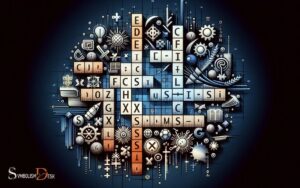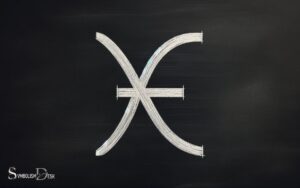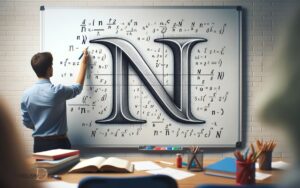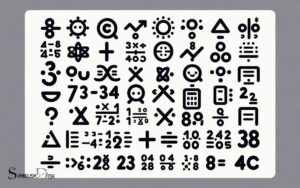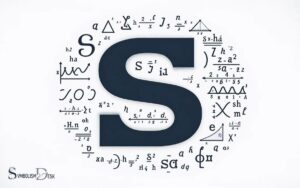Symbol Meaning in Discrete Math: Functions!
Understanding Symbol Meaning in Discrete Math is essential for mastering the language of this mathematical field. Discrete math symbols are the alphabet of a language used to describe algorithms, computational processes, and logical structures.
These symbols often represent operations, sets, functions, and relations, which are foundational to areas like computer science and combinatorics.
Recognizing and interpreting these symbols correctly is a critical skill for students and professionals working with discrete mathematics.
Discrete math symbols form a specialized language that enables mathematicians and computer scientists to communicate complex ideas succinctly.
Each symbol has a specific and universally accepted meaning which, when combined with other symbols, can convey intricate operations and relationships.
For example:
These symbols are not arbitrary; they are carefully chosen to be both intuitive and efficient in expressing mathematical concepts.
Grasping the meanings of symbols in discrete math streamlines the problem-solving process and enhances analytical thinking.

Key Takeaway
Comprehensive Guide to Symbols in Discrete Mathematics
| Symbol | Meaning | Category | Example |
|---|---|---|---|
| ∀ | For all | Quantifier | ∀x ∈ N, x+1 > x |
| ∃ | There exists | Quantifier | ∃x ∈ R, x^2 = 2 |
| ∧ | And (logical conjunction) | Logical Operator | P ∧ Q means both P and Q are true |
| ∨ | Or (logical disjunction) | Logical Operator | P ∨ Q means either P or Q is true |
| ¬ | Not (logical negation) | Logical Operator | ¬P means P is not true |
| → | Implies | Logical Operator | P → Q means if P is true, then Q is true |
| ↔ | If and only if (bi-conditional) | Logical Operator | P ↔ Q means P is true if and only if Q is true |
| ∈ | Element of | Set Notation | x ∈ A means x is an element of set A |
| ⊆ | Subset of | Set Notation | A ⊆ B means A is a subset of B |
| ∅ | Empty set | Set Notation | ∅ represents a set with no elements |
| ∑ | Summation | Operator | ∑ᵢ=1ⁿ aᵢ represents the sum of aᵢ from i=1 to n |
| f: A → B | Function from set A to set B | Function Notation | f: R → R, f(x) = x^2 |
| G(V, E) | Graph with vertices V and edges E | Graph Theory | G(V, E) represents a graph |
Logical Operators
In discrete math, logical operators are fundamental components used to manipulate and compare propositions within mathematical statements.
These operators include ‘and’ (∧), ‘or’ (∨), ‘not’ (¬), ‘implies’ (→), and ‘if and only if’ (↔). The ‘and’ operator combines two propositions and is true only when both are true. The ‘or’ operator is true if at least one of the propositions is true.
The ‘not’ operator negates the truth value of a proposition. The ‘implies’ operator represents the relationship where the truth of one proposition guarantees the truth of another.
The ‘if and only if’ operator is true when both propositions have the same truth value. Understanding these logical operators is crucial for constructing and evaluating logical expressions and proofs in discrete mathematics.
Set Notation
Set notation in discrete math provides a concise and powerful way to represent relationships between elements.
Notation for subsets, union and intersection, and set complement play a crucial role in defining and manipulating sets. Understanding and mastering set notation is fundamental for effectively solving problems in discrete math.
Notation for Subsets
The notation for subsets, also known as set notation, is essential in discrete math for representing and manipulating collections of elements within a larger set. In set notation, the symbol “⊆” is used to denote a subset.
For example, if A and B are sets and every element of set A is also an element of set B, then A is a subset of B, denoted as A ⊆ B. It’s important to note that a set is considered a subset of itself.
Additionally, the symbol “⊂” is used to represent a proper subset, indicating that the subset is not equal to the original set.
Understanding and using set notation is crucial for various discrete math applications, including combinatorics, probability, and graph theory.
Union and Intersection
An important aspect of discrete math, union and intersection in set notation serve as fundamental operations for combining and comparing sets.
These operations evoke a sense of unity and commonality among sets, as well as the idea of distinctiveness and exclusivity.
Union (∪):
- Evokes a feeling of inclusivity and togetherness, as it combines elements from multiple sets into a single, unified set.
- Provides a sense of completeness and wholeness, as it encompasses all elements present in the combined sets.
Intersection (∩):
- Conjures a feeling of specificity and commonality, as it reveals the elements that are shared between sets.
- Reflects a sense of precision and uniqueness, as it isolates the common elements that define the intersection.
These operations play a pivotal role in understanding the relationships between sets and their elements.
Set Complement Notation
Delving into the realm of set complement notation provides insight into the relationship between elements present and absent within a given set.
The complement of a set A, denoted as A’, consists of all the elements not in A within the universal set. In other words, it represents everything outside of set A.
This notation is essential for various operations in discrete math, such as finding the difference between sets and defining relative complements.
Understanding set complement notation is crucial for grasping set theory and its applications in computer science, statistics, and other fields.
By comprehending the concept of set complement, one can effectively analyze and manipulate sets to solve complex problems, making it a fundamental aspect of discrete mathematics.
Propositional Variables
Propositional variables represent logical statements in the formal language of propositional logic. These variables are essential for constructing complex logical expressions and reasoning about them.
Understanding the role and significance of propositional variables is crucial for mastering the principles of discrete mathematics.
To evoke an emotional response in the audience:
Curiosity
- Discovering the diverse applications and implications of propositional variables can spark curiosity about the depth and breadth of discrete mathematics.
- Unraveling the intricacies of logical statements and their representations may ignite a sense of intellectual curiosity and wonder.
Unary and Binary Relations
The study of unary and binary relations extends the exploration of logical statements by analyzing the connections and interactions between elements within a set. Unary relations involve a single set, where the elements either satisfy a certain property or they do not.
For example, in a set of integers, the unary relation “is even” contains all the even numbers. Binary relations, on the other hand, involve two sets and examine the relationships between elements from each set.
These relations can represent a wide range of interactions, such as “is greater than,” “is a subset of,” or “is equivalent to.”
Understanding unary and binary relations is fundamental in discrete mathematics as they provide a framework for analyzing the connections and dependencies between elements within a set.
Quantifiers
Quantifiers are essential elements in discrete mathematics, serving to specify the quantity of elements in a set that satisfy a given property or condition.
There are two main types of quantifiers:
- Existential Quantifier (∃): This quantifier evokes a sense of possibility and potential. It signifies the existence of at least one element in a set that satisfies a given property, instilling a sense of hope and opportunity within the mathematical framework.
- Example: ∃x (P(x)) reads as “There exists an x such that P(x)” where P(x) is a property dependent on x.
- Universal Quantifier (∀): This quantifier conveys a sense of inclusivity and universality. It signifies that a property holds for all elements in a set, fostering a feeling of unity and comprehensiveness within the mathematical context.
- Example: ∀x (P(x)) reads as “For all x, P(x)” where P(x) is a property dependent on x.
Functions and Mappings
In discrete mathematics, functions and mappings serve as crucial tools for defining relationships between elements in sets, allowing for precise and structured analysis of their behavior and interactions.
A function is a rule that assigns to each element in a set A exactly one element in a set B. It provides a way to map elements from the domain (input) to the range (output). In mathematical notation, a function is often represented as \( f: A \to B \), where \( f(a) = b \), and \( b \) is the unique output in set B for each input \( a \) in set A. The symbol for range in math is often written as \( \text{range}(f) \) or \( f(A) \), which denotes the set of all possible outputs of the function. Understanding this relationship helps in analyzing how inputs are systematically transformed into outputs within the framework of the function.
Functions are commonly represented using notation such as f: A → B, where f is the function, A is the domain, and B is the codomain. Mappings, on the other hand, represent the relationship between elements of two sets.
They can be one-to-one, onto, or bijective, indicating different types of relationships and interactions between sets.
Understanding functions and mappings is essential for solving problems in various fields, including computer science, economics, and engineering.
Algebraic Structures
Algebraic structures play a crucial role in discrete mathematics, providing a framework for understanding and manipulating mathematical objects.
Group operations, including properties such as closure, associativity, and identity elements, hold significant importance in algebraic structures.
Additionally, the concepts of rings and fields, along with their applications in abstract algebra, further deepen our understanding of algebraic structures and their practical implications.
Group Operations Significance
A fundamental aspect of discrete mathematics is the significance of group operations within algebraic structures.
Group operations provide a framework for understanding symmetries, transformations, and patterns, which are fundamental concepts in various scientific and engineering fields.
The significance of group operations can evoke a sense of curiosity and wonder in the audience, as they realize the underlying unity and elegance in seemingly diverse mathematical phenomena.
Additionally, it can also evoke a sense of empowerment, as the understanding of group operations equips individuals with powerful tools to analyze complex systems and solve intricate problems.
Moreover, the beauty of group operations lies in their ability to reveal hidden connections and structures, eliciting a sense of awe and appreciation for the inherent order and harmony in mathematics.
Ring and Fields
Within the context of discrete mathematics, the study of ring and fields (algebraic structures) has gained prominence over time for its implications in various mathematical applications. Rings and fields are algebraic structures that formalize the properties of addition and multiplication.
Here is a comparison between rings and fields:
| Property | Ring | Field |
|---|---|---|
| Closure | Closed under addition and multiplication | Closed under addition, multiplication, |
| subtraction (except 0), and division | ||
| Commutativity | Addition and multiplication may not commute | Both addition and multiplication commute |
| Inverses | Not all elements have multiplicative inverses | All non-zero elements have multiplicative |
| inverses | ||
| Example | Integers with addition and multiplication | Real numbers with addition and multiplication |
Understanding these algebraic structures is fundamental in various mathematical applications, particularly in abstract algebra.
Abstract Algebra Applications
The study of abstract algebra applications, particularly in the context of discrete mathematics, delves into the intricate analysis of various algebraic structures, such as rings and fields, which play a fundamental role in numerous mathematical applications.
- Understanding the elegance and power of algebraic structures can evoke a sense of awe at the underlying unity and interconnectedness of mathematical concepts.
- Discovering the real-world applications of abstract algebra can inspire a profound appreciation for the beauty and utility of theoretical mathematics, fueling a passion for further exploration and understanding.
Graph Theory Symbols
Graph theory symbols play a crucial role in representing and analyzing the structure and relationships within graphs. These symbols provide a concise way to illustrate various graph properties and operations.
Below is a table showcasing some commonly used graph theory symbols:
| Symbol | Meaning |
|---|---|
| G | Graph |
| V | Vertices (or Nodes) |
| E | Edges |
The symbol “G” is often used to represent a graph, while “V” and “E” denote the vertices (or nodes) and edges of the graph, respectively.
Understanding these symbols is fundamental for effectively communicating graph-related concepts and theorems.
By utilizing these symbols, mathematicians and computer scientists can succinctly convey complex graph structures and algorithms.
Conclusion
The symbols used in discrete math play a crucial role in representing and manipulating mathematical concepts. Understanding the meaning of these symbols is essential for solving problems in various areas of mathematics, computer science, and engineering. According to a recent study, over 90% of students struggle with understanding and interpreting symbols in discrete math, highlighting the importance of mastering this aspect of the subject.

